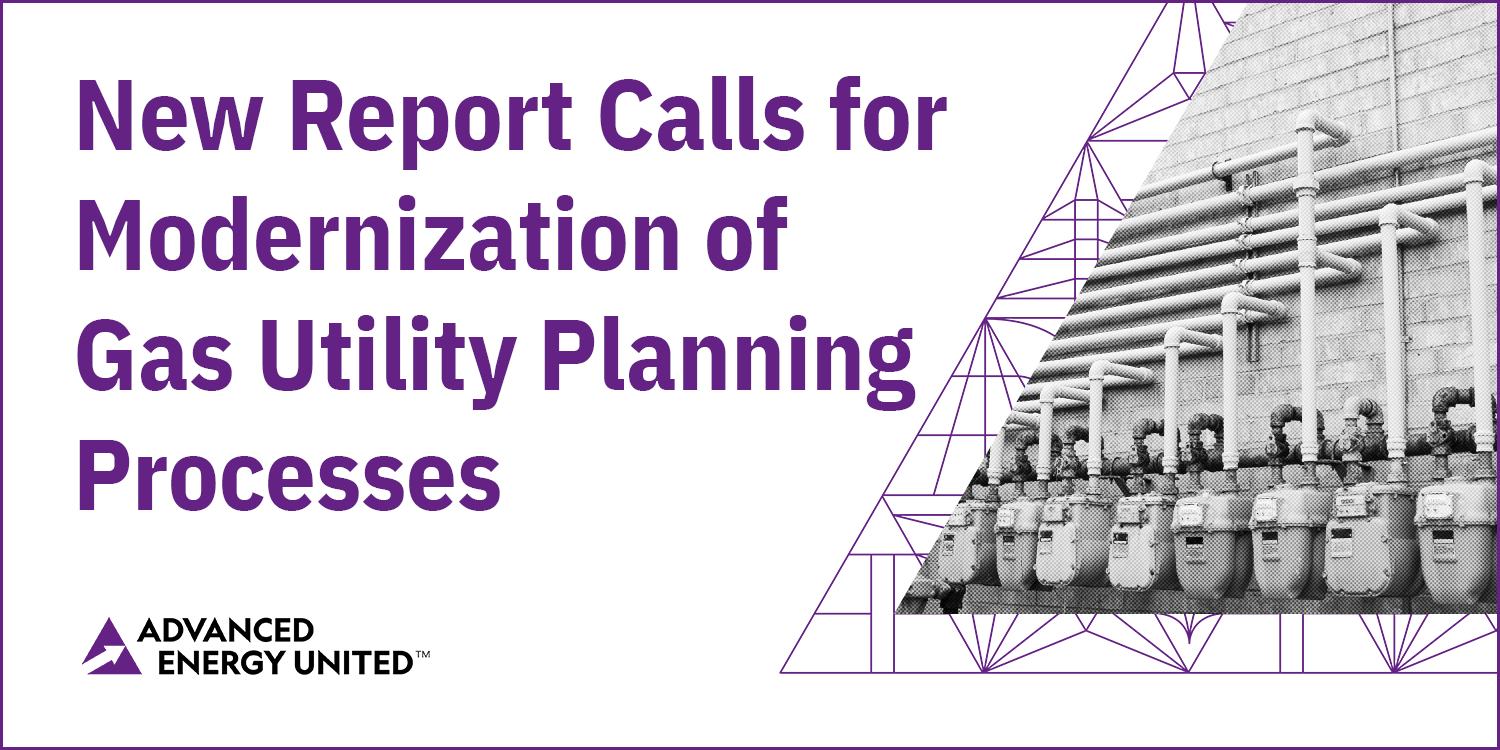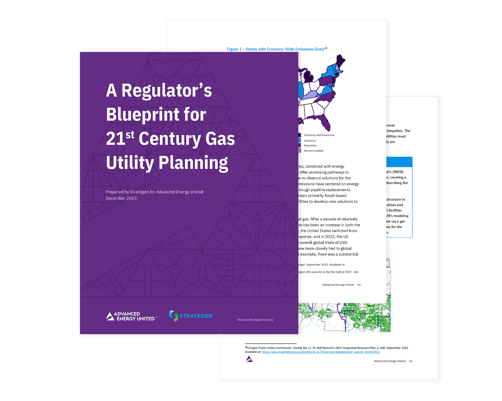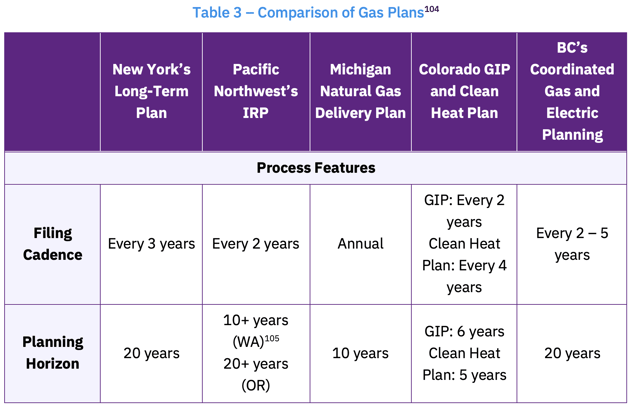
Electric utility resource and infrastructure planning has been a staple of electricity policy in most U.S. states for decades. Conducted in the public eye, with regulatory oversight and stakeholder participation, integrated resource plans, distribution plans, transmission plans, transportation electrification plans, energy efficiency and demand side management plans, grid modernization plans, and rate cases have all served to guide prudent electric system investments through an increasingly distributed and complex energy and policy landscape.
It might be surprising then to learn that the electric utility’s state counterpart, the local gas distribution utility, which delivers natural gas via distribution pipelines into our homes and businesses, generally lives within a very different regulatory framework. The typical gas utility conducts all of the same long-term planning and related analyses, but is not required by law to do it in a formalized, transparent process. Long thought to be a much more straightforward business of purchasing just one fuel type from upstream suppliers, building pipes to new neighborhoods, and replacing pipes as they age, gas utilities have been mostly left alone.
But the gas utility business is no longer so straightforward. Facing competition from new, high-performing electric system alternatives such as air and ground source heat pumps, mini splits, and heat pump water heaters and dryers, pressure to decarbonize a system designed to serve a fossil fuel, volatile commodity markets, and upward rate pressures due to infrastructure spend that’s outpacing load growth, a new set of risks to business-as-usual have emerged.
If left to the status quo, gas utilities may face a “death spiral” with ever-increasing rate increases, customer deflections, and more rate increases until their business is no longer financially viable. Vulnerable customers with little ability to purchase new appliances, including renters, low-income residents, and fixed-income seniors, will be left with no choice but to pay significantly higher gas bills. Furthermore, without insight into hyper-local electrification trends, electric utilities that overlap with gas utilities may end up behind the eight ball in preparing the grid for new, customer-driven clean building demand.
With so many rapidly changing circumstances, gas utilities are more likely than ever to over-invest or invest in the wrong set of resources. And ultimately, remaining gas customers bear the risks of inadequate system planning, or system planning that overly favors one set of interests over another.
It remains a core responsibility of state utility regulators to best mitigate risks to utility customers. That’s why Advanced Energy United has been advocating across the states for new modern gas planning processes to mirror, to the extent possible, electric utility resource and distribution system plans. The need for a new era of gas utility planning is the focus of our new paper, developed with Strategen, titled A Regulator’s Guide to 21st Century Gas Utility Planning.
This paper explores trends affecting the gas utility’s core business and the benefits of establishing a modern gas planning process. It then introduces a comprehensive set of process and analytical elements that together should create the strongest plan, with a deep dive into several key topics including non-pipeline alternatives, embedding equity, mapping, evaluating hydrogen and renewable natural gas proposals, and stakeholder engagement.
In the second part of the whitepaper, the paper does a deep dive into several existing gas planning frameworks, highlighting successes and challenges and comparing them against the comprehensive framework proposed in Part I:
- New York’s Long-Term Plans
- Colorado’s Gas Infrastructure Plans and Clean Heat Plans
- The Pacific Northwest’s Gas Integrated Resource Plans
- Consumers Energy’s voluntarily Capital Plan in Michigan
- British Columbia’s Coordination between Gas and Electric Utility Plans
Advanced Energy United stands ready to help states establish this new process, which we believe is key to saving ratepayers money in the short and long term, and ensuring an orderly, affordable, reliable transition to 100% clean homes and businesses.




